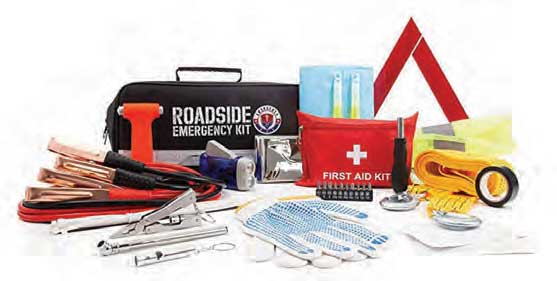
It’s summer! Your plans may include driving out of town to visit family or friends for a long weekend, or something local like going to see the Memphis Redbirds play a game or heading to your favorite restaurant for a night of fine dining. Unlike in the winter, we tend not to think about weather conditions and travel safety as much. In the colder months, we are typically more cognizant of the weather forecast and freezing temperatures because they can hinder our ability to get to where we want to go. There’s nothing like a huge snowstorm in the forecast to ruin your travel plans or delay a trip! Although the heat may not seem like it’s as dangerous as the cold, it certainly brings its own potential challenges. Extreme heat can affect your car, and if your car should break down while you are traveling, the occupants can be at risk of heat-related illnesses, such as sunburn, heat exhaustion, and heat stroke.
With the summer in full swing, it’s a great time to talk about travel safety and what can be done to ensure you are as prepared as possible when you get behind the wheel or climb into a car, no matter how long or short your trip might be. If you plan to travel, or even head out for a simple trip to Kroger this summer, there are a few things you might want to keep in mind.
Check Your Vehicle. It is important to make sure your car is in tip-top shape. You can run a recall check through the National Highway Traffic Safety Administration to see if your vehicle has any critical safety issues here: https://www.nhtsa.gov/recalls. You will also want to make sure your tires, cooling system, fluid levels, batteries, lights, and wiper blades are all functioning properly. Motor oil, transmission fluid, brake fluid, power-steering fluid, and windshield wiper fluid can all be at risk of running dry in hot weather. Keep them topped off and double-check them before any long trips. And don’t forget to fuel up!
Avoid Risky Behaviors. Don’t text and drive or drive distracted. Pick your music before you start to drive. Set your GPS and know where you are going before you put your foot on the gas. Limit your distractions as much as possible. Make sure you wear your seat belt, every trip, every time.
Plan Ahead. Before you leave, make sure your vehicle is stocked. Even a well-maintained vehicle can break down, so it’s smart to have an emergency roadside kit in your car. This can help keep you safe, should you find yourself stranded. You can keep the kit in your trunk, and make sure it stays stocked! Some of the things to keep in your kit can include:
Battery pack and charger cable for your cell phone • First aid kit
Flashlight and spare batteries • Flares and a white flag
Jumper cables • Tire pressure gauge • Jack (for changing tires)
Nonperishable food, drinking water, and medicines
Maps • Notepad and paper

Take Care of Yourself. As the driver, it is important to make sure you are safe behind the wheel. Driving relies heavily on vision and response time, so it’s critical that those skills are intact. Visual acuity, or how clearly you can see, and field of vision, or how wide of an area your eye can see when you focus on a central point, are the two most important factors in terms of vision for safe driving. Vision screens and cognitive assessments are offered through the Therapy Department and can be a great tool to help ensure driver safety.
For more information on how Functional Pathways could help you travel safely this summer, please contact our Therapy Team!
Brittany Austin, National Director of Health and Wellness, Functional Pathways





 © 2025 Kirby Pines LifeCare Community. All Rights Reserved |
© 2025 Kirby Pines LifeCare Community. All Rights Reserved | 